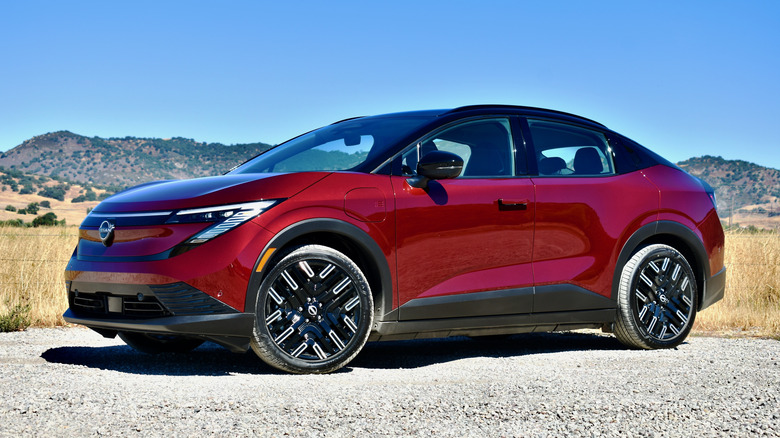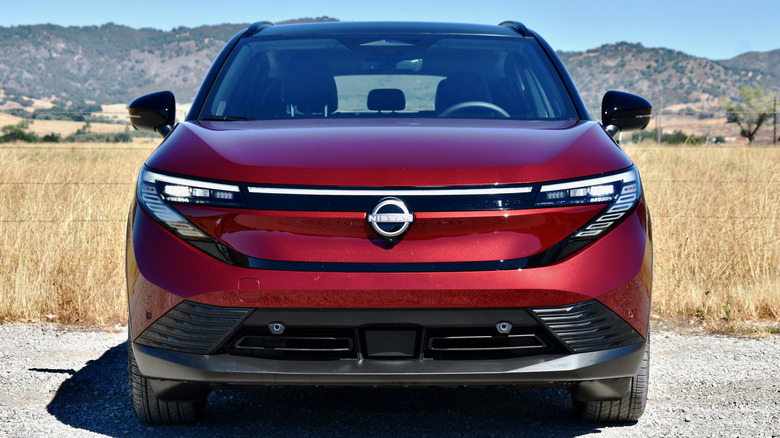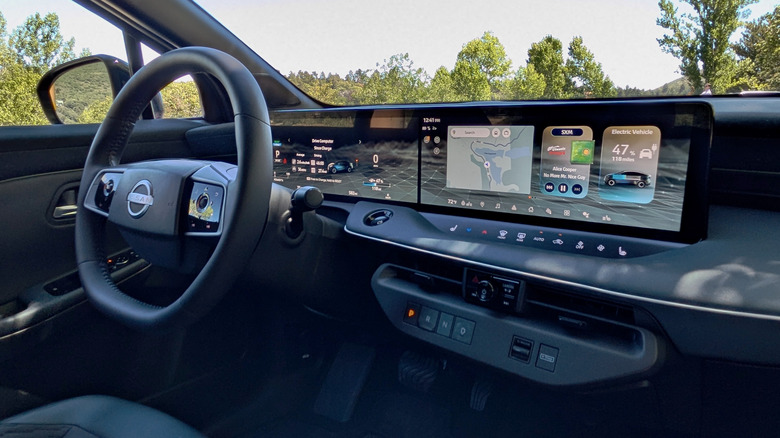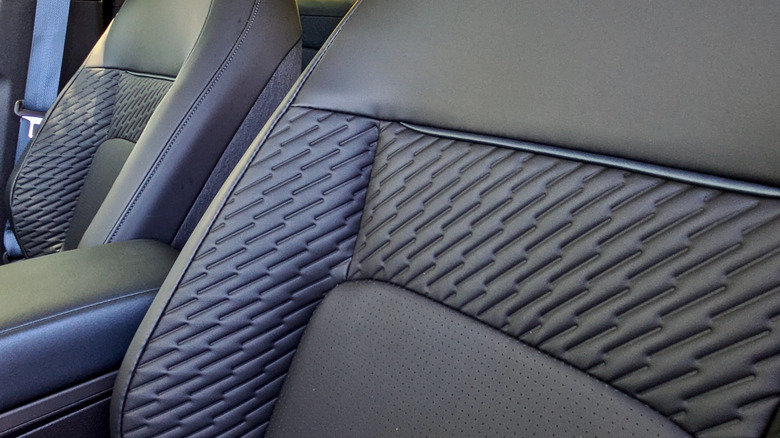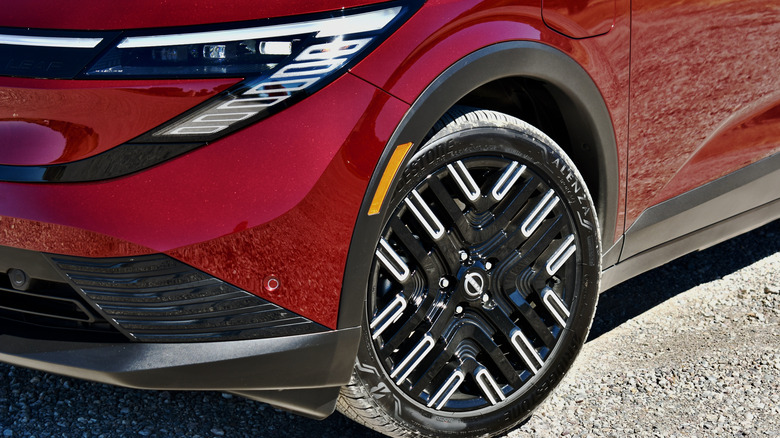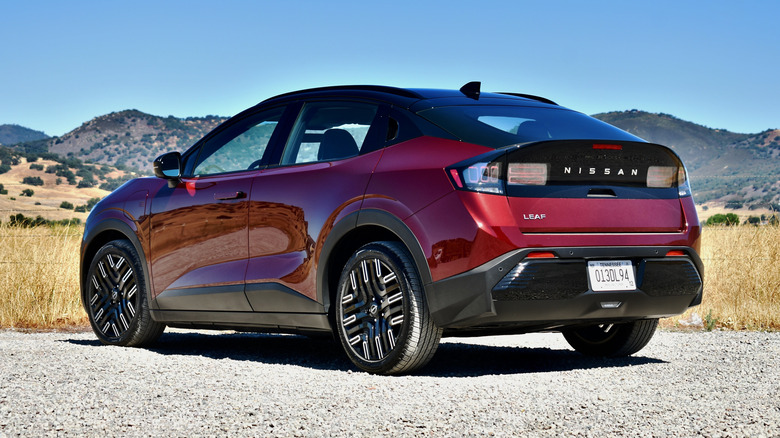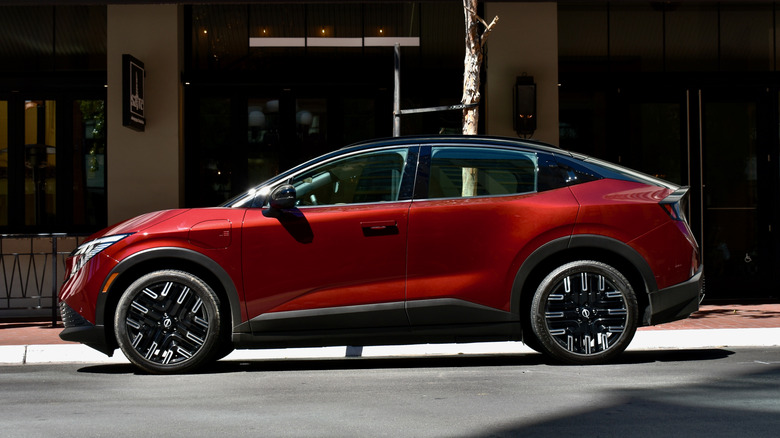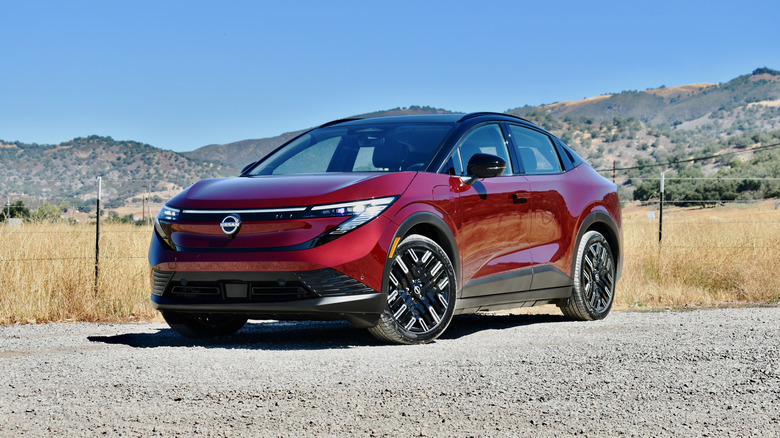The 2026 Nissan Leaf Is Not The EV It Looks Like
Tesla gets most of the credit, but the Nissan Leaf went on sale before the Model S—in December 2010, as a 2011 model—and at a price more people could afford. It's one of the unsung heroes of the modern EV age, in part because even Nissan couldn't be bothered to sing its praises. After introducing a second-generation Leaf midway through the 2010s, Nissan essentially put its EV pioneer out to pasture for nearly a decade. Minimal updates made the outgoing Leaf feel like a time capsule in its final years.
Returning from obscurity, the 2026 Nissan Leaf aims to prove that it's never too late for a comeback. This third-generation model brings needed mechanical and tech updates, all wrapped in dramatically different, crossover-like sheetmetal. But the new Leaf has one very important commonality with the old one: affordability. At press time, it will be the least-expensive electric car sold in the United States.
The electric future has never looked so welcoming
Forgive the obvious pun, but this generation of compact Nissan EV turns over a new Leaf. The first- and second-generation models tried to stand out from and blend in with gasoline cars, respectively, but they both stuck with the hatchback body style. The new model follows current fashion with a more crossover-like appearance—but without the added bulk.
Nissan's design team deserves a bonus for this one. The new Leaf has the upright appearance of a crossover, but it's only 0.2 taller than the outgoing model. And while it is 0.8 inch wider, it's three inches shorter than the old Leaf (the wheelbase also shrinks by 0.4 inch). Those dimensional facts are masked by a tall, wavy belt line like the one worn by the Nissan Ariya crossover and a broad, grinning front fascia. That Nissan was able to maintain the Leaf's compact proportions while making it appear bigger is an impressive feat indeed.
Nissan even managed to trim the Leaf's drag coefficient from 0.29 to 0.26 with flush door handles, subtle surface tweaking around the trailing edges of the wheels, and a rear spoiler mounted on an upright surface that recalls the Nissan Z sports car. That surface also incorporates taillights in a "2-3" arrangement, because the pronunciation of those numbers in Japanese is "ni-san." On higher trim levels, those taillights also have a holographic effect derived from pachinko machines.
Improved space efficiency
The 2026 Leaf moves to the CMF-EV dedicated EV architecture, shared with the larger Nissan Ariya and Renault Mégane E-Tech. No longer sharing a platform with gasoline cars helped maintain interior space despite the new model's shorter overall length—for the most part.
With the second-row seats folded, cargo space is up by 25.5 cubic feet, to 55.5 cubic feet. But with the rear seats in place—as they'll likely be most of the time—the 2026 model's 20.0 cubic feet of space is 3.6 cubic feet less than the 2025 model's. And that's not because engineers scooted the rear seats back to improve legroom: that actually shrinks by 1.7 inches. This makes for a fairly tight squeeze compared to most other mass-market EVs, and means it will be pretty much impossible for adults to sit comfortably behind all but the shortest drivers.
Up front, the feeling is quite different. A low dashboard and center console combine with an expansive windshield to create a very spacious feeling, and that's before switching the available glass roof's electrochromic panel from opaque to transparent. However, that windshield's steep angle also impeded forward visibility, as you sit quite far back and behind intrusive forward roof pillars. The rear window is also tiny, so it's a good thing Nissan made a 360-degree camera system standard, including wide-angle and simulated through-the-hood views.
Tech catches up to the rest of the segment
The interior may have some functional foibles, but it certainly looks good thanks to design flourishes like a chunky two-spoke steering wheel, a dashboard that seems to cradle its complement of screens, and textured upholstery that also help hide the fact that materials are decidedly economy-car grade. Optional TailorFit material feels much nicer than the artificial leather in most other cars, and is made from 65% recycled materials, according to Nissan. The automaker's Zero Gravity front seats felt as comfortable as ever, but a bit narrow.
Infotainment interfaces have come a long way since the last Leaf launched, but the 2026 model catches up with a standard twin-screen setup (12.3-inch screens in S and S+ models, 14.3 inches in SV+ and Platinum+ grades) and wireless Apple CarPlay/Android Auto. SV+ and Platinum+ models add Google built-in apps, rear USB-C ports, and wireless charging, the latter taking the space-efficient form of an angled slot in the center console. Platinum+ models also have a 10-speaker Bose Personal Plus system with front-headrest speakers.
As in other recent Nissan models, the interface is straightforward, but with a somewhat cluttered instrument cluster. Nissan also wasn't shy about hard buttons, even rendering the shifter as a straightforward row of buttons in the middle of the dashboard. The standard ProPilot highway-driving system can also be activated with the push of a button, although it doesn't offer some functions—such as automated lane changes—available in pricier Nissan models.
It finally has 300 miles of range
The Leaf is still a single-motor front-wheel drive car, but a new integrated drive unit combines the motor, inverter, and reducer, saving weight and improving efficiency, Nissan claims. At launch, it's paired with a 75-kilowatt-hour battery pack in the Leaf S+, SV+, and Platinum+ grades, and makes 214 horsepower and 261 pound-feet of torque. A Leaf S base model with a 52-kWh battery pack and 174 hp/254 lb-ft rating will follow these models to showrooms at a later date.
This gives the bigger-battery Leaf models the same amount of horsepower, but a bit more torque, than equivalent 2025 models. That translates to acceleration that is still EV-quick, but not remarkable in the context of other mass-market electric vehicles. More noteworthy is that the 2026 model's battery packs are bigger and liquid-cooled (a battery heater is also available on SV+ and Platinum+ models), not only allowing for more range, but maximizing in a wider range of conditions.
Nissan hasn't confirmed range estimates for the smaller pack, but 75-kWh models handily surpass the previous-generation Leaf at 303 miles for the S+ and 288 miles and 259 miles, respectively, for the SV+ and Platinum+, which are heavier and ride on bigger wheels.
Charging is more convenient, but still slow
The 2026 Leaf is also one of the first non-Tesla EVs with a built-in North American Charging Standard (NACS) port, replacing the idiosyncratic CHAdeMO standard of the previous-generation Leaf. Instead of single charge port in the middle of the front fascia, as on previous models, the third-generation Leaf has an SAE J3400 NACS port on the passenger-side front fender and an SAE J1772 AC port on the driver-side front fender. That's a better fit for the Tesla Supercharger stations Leaf drivers now have access to.
While the hardware is updated, charging performance doesn't make a big leap. The Leaf DC fast charges at a maximum 150 kilowatts, so even with its relatively small battery packs, a 10%-80% charge still takes 35 minutes. A more powerful 7.2-kW AC onboard charger is now standard, but Nissan hasn't said how long a full recharge will take. Platinum+ models also have vehicle-to-load (V2L) capability with up to 3.45 kW of output for running small appliances or charging your e-bike.
On the software side, the 2026 Leaf features Plug and Charge capability for less-complicated public charging, and route planning through the embedded Google Maps app on SV+ and Platinum+ models that includes automated battery preconditioning when approaching charging stops. It's a little disappointing that the longest-range S+ model doesn't have this Google built-in capability, which really comes into its own on road trips that would also make use of that extra range.
Great ride quality, lackluster handling
On the chassis side, the biggest change is the adoption of multilink independent rear suspension in place of the previous generation's torsion beam. This contributes to ride quality that exceeded expectations for the Leaf's price point. Even on the largest-available 19-inch wheels, the Leaf isolated backsides from bumps without the excessive body motion that comes with overly-soft suspension tuning.
The retuned electric power steering was less impressive. The steering required so much input that negotiating tight corners or making U-turns felt like securing the hatch on a World War II submarine. The steering's lack of urgency and the suspension's comfort tuning also made it hard to counteract weight transfer, which pushed the car wide through certain corners. Sporty handling isn't in the Leaf's mission brief, but dialing up the chassis precision a bit more would make this EV a lot more pleasant to drive, and align expectations with its compact size.
Nissan also replaced the previous Leaf's e-Pedal system, which blended regenerative braking with the car's friction brakes, with the e-Step system used in the Ariya. Activating e-Step (by pressing a button on the dashboard) locks in a high level of regen, but you can also switch between four levels with steering-wheel paddles. With e-Step engaged, only occasional use of the brake pedal was required, mainly for bringing the car to a complete stop. But it's good that Nissan gives drivers options for less regen as well.
2026 Nissan Leaf verdict
Remarkably, the Leaf's long-overdue makeover doesn't bring a huge increase in prices. The longest-range Leaf S+ model starts at just $31,485, and there's still a cheaper Leaf S model with the smaller battery on the way. The SV+ and Platinum+ models start at $35,275 and $40,485, respectively, which are still very competitive in the current EV-market context.
This pricing structure aligns the Leaf more closely with entry-level EVs like the Hyundai Kona Electric and Kia Niro EV, but its level of equipment is closer to models one step up, like the Hyundai Ioniq 5 and Kia EV6. Design is subjective, but the Leaf certainly looks more than basic, standing up well to the most fashion-forward current EVs. And while some EVs offer more range than the 303-mile Leaf S+, you'll have to pay a lot more to get it. Other new models—notably the resurrected Chevrolet Bolt EV—might change things, but right now the Leaf is an incomparable value.
Inevitable compromises like limited rear-seat space, lackluster handling, and relatively slow charging mean the Leaf won't be the right car for everyone. But it will be the right car for a lot of people, giving new-car shoppers a badly needed lower entry point to electric motoring, with enough style and features to make them feel like aren't stuck in the bargain bin. That perfectly positions the 2026 Nissan Leaf to carry on the legacy of its 2011-model-year ancestor by continuing to drive EV adoption.
